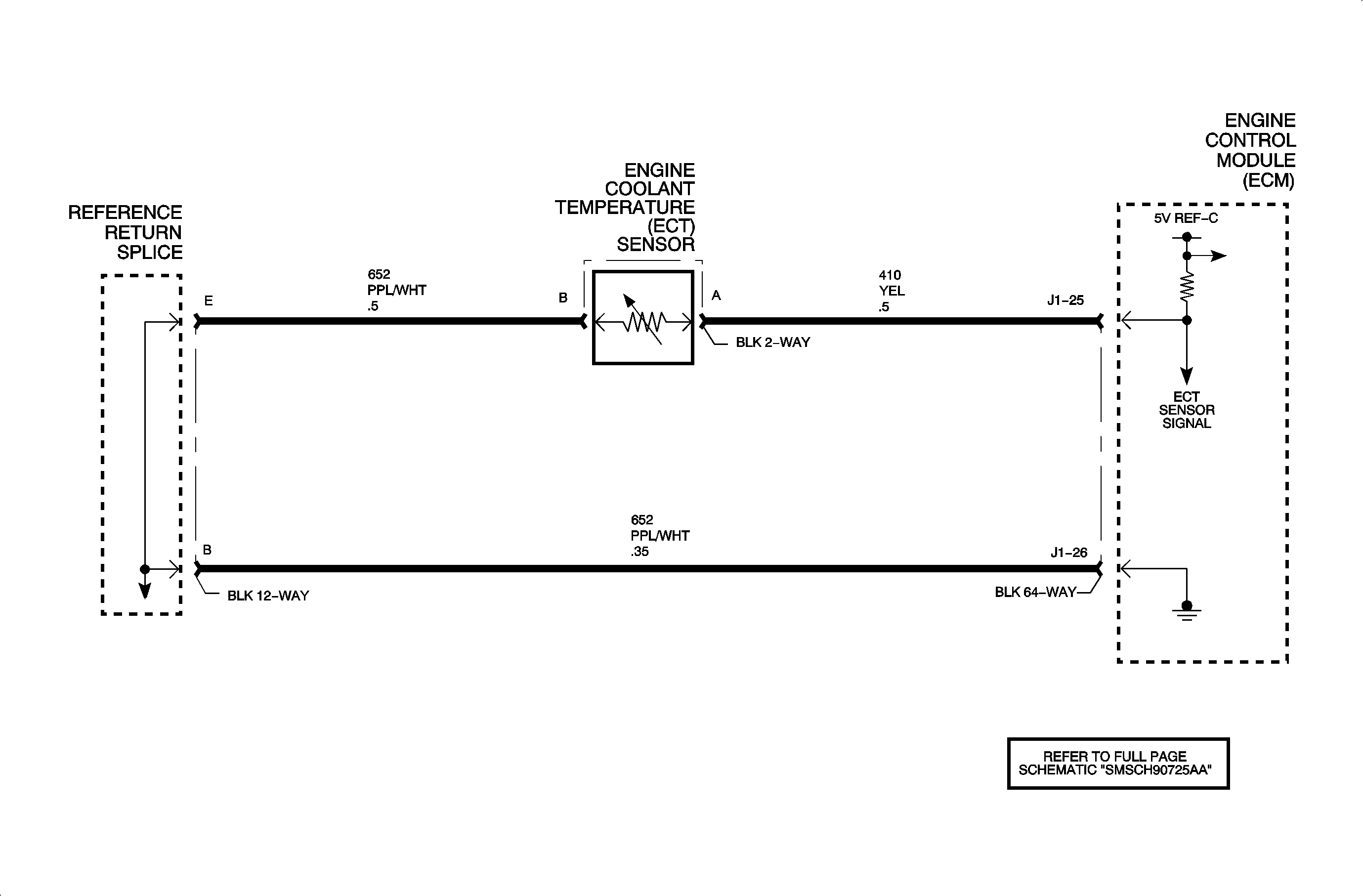
The engine coolant temperature (ECT) sensor is a thermistor that varies resistance according to changes in engine coolant temperature. The ECM supplies a 5-volt reference through a pull-up resistor to the sensor, which is connected to a ground. When the sensor is cold it has a high resistance (high signal voltage at ECM). As the sensor temperature increases, its resistance decreases (lower signal voltage at ECM). The ECM uses the signal voltage to determine engine coolant temperature. DTC P0125 sets when the calculated accumulated airflow exceeds the predicted accumulated airflow when the engine coolant temperature has reached a calibrated temperature (more air will flow through a cold engine then when the engine is warm).
DTC Parameters
DTC P0125 will set if the calculated accumulated airflow has been exceeded, based on the predicted airflow, when the ECT temperature has reached 37°C (99°F) after the engine has been running between 2 and 5 minutes when:
| • | The startup ECT is less than 14°C (57°F). |
| • | The engine run time is greater than 0.5 seconds. |
DTC P0125 runs once per ignition cycle once the above conditions have been met.
P0125 is a type B DTC
Diagnostic Aids
DTC P0125 indicates lower than normal engine coolant temperature, which most likely was NOT caused by a short/open or intermittent short/open in the ECT wiring.
Possible causes of low engine coolant temperature:
| • | The thermostat is stuck open. |
| • | The cooling fan(s) is always On. |
| • | The ambient temperatures are very low. |
| • | There is corrosion in the connector or resistance in the wiring. |
| • | The ECT sensor is skewed. |
The ECT sensor reading may be compared to the IAT sensor reading on the scan tool after the vehicle has been sitting longer than 6 hours with the ignition Off. Both readings should be within 6°C or 10°F of each other.
Refer to ECT General Description for the Temperature vs. Resistance chart.
